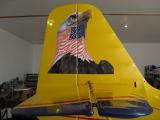- Replies 36
- Views 14.2k
- Created
- Last Reply
Most Popular Posts
-
Well I am a VP man and cant add anything to ya'lls discussion much less trouble shooting. I do like that you want to see it to the end and share what you found out. I have seen to many threads that ge
-
I did a cut and paste (see below) from gmctd that was placed on the Dodge Diesel Cummins Forum (thanks for sharing), which I can not thank him enough as it is an EXCELLENT description/technical discu
-
+1 I came accross a lot of those incomplete posts as well while researching this topic when having similar fuel issues (extremely frustrating when u have a broken down truck). This is a great contribu




2007 Dodge 2500 RAM 5.9L 4x4 Mega Cab (82,000 miles well taken care of vehicle): Engine died at highway speed, and will not start with no immediate electrical problems. I was traveling on a 700 mile trip for labor day holidays, and after five hours during the returning home leg and while on cruise control at night, then without any notice the engine just stopped running/producing power at 60 mph and truck coasted to a stop. There was no engine life but would crank and did not start or even show any signs of firing. Immediate checks of fuses determined that there were no blown fuses. Just to be sure I replaced fuse #41 for EGM but this did not help. Luckily, I was 7 miles from home and got towed by a friend to house - whew!. This morning, I checked engine codes and retrieved a P2509, ECM/PCM intermittent power and an intake low voltage code which, I cleared and these did not return upon several crankings of the engine. No other electrical issues or instrument indications provide any further symptom identification. I also unscrewed and checked the fuel filter housing to check for fuel and it was full as well as I can hear the fuel pump runing during the the ignition switch being first turned on. I will empty it next and watch it refill to verify fuel is being pumped from the tank too. So my initial thoughts are that for such a sudden (without symptoms or warnings) engine to cease running there must be an electrical issue of some sort. I don't believe the ECM is without power or ground (initial assumption), since all wiring looks good and the batteries are both in good standing, but I plan to pull PCM connector and follow continuity checks per P2509 troubleshooting steps. This truck has no maintenance history problems, with the exception when I washed engine compartment and got fuel rail pressure sensor connection wet and it went bad causing loss of power and surging symptoms. With this experience and all the research during that trouble shooting effort, I initially thought the FCA was going bad and purchased one to have on hand before I narrowed down the problem to the fuel rail pressure sensor via consistent associated engine fault codes. So, I am already at a loss for where to go if the PCM continuity checks are ok, which I fully believe will not be an issue??? Is it reasonable to believe a faulted FCA could cause shutdown of the engine suddenly? ...or could the fuel pump itself fail suddenly like this also??? Any other trouble shooting leads will be welcome. Thanks.